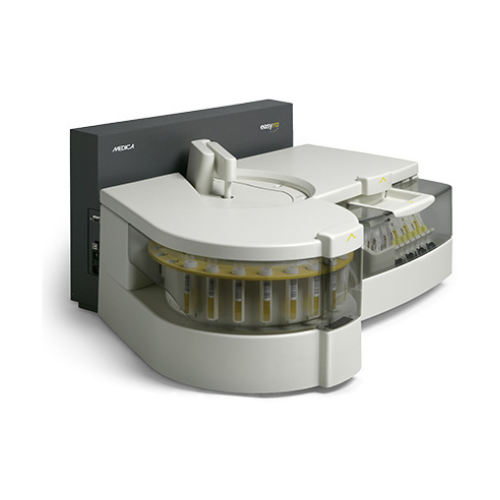For Business Use Only. Does Not Ship to Residential Addresses. For use inside an Analyzer, Sold Separately.
OSR6134 Olympus BUN Reagent (4x620 tests)
Product Code: OSR6134
Shipping Weight: 10.00lbs (4.54kg)
Specifications
Manufacturer: Beckman Coulter
Country of Origin: Ireland
Application: Reagent
Number of Tests: 4 X 620 Tests
Test Name: Urea Nitrogen (BUN)
Test Type: Renal / General Chemistry
UNSPSC Code: 41116004
Volume: 620 Tests
Intended Use
System reagent for the quantitative determination of Urea Nitrogen in human serum and urine on Beckman Coulter AU analyzers.
*Urea Nitrogen (Bun) reagent OSR6634 for use on the AU2700/5400 system only.
*Urea Nitrogen (Bun) reagent OSR6634 for use on the AU2700/5400 system only.
About BUN Reagent
Measurements of urea nitrogen are used in the diagnosis and treatment of certain renal and metabolic disorders.
Urea nitrogen makes up approximately 75% of the total nonprotein nitrogen (NPN) fraction of the blood. It is synthesized in the liver from ammonia produced as a result of deamination of proteins. Filtration of urea from the blood into the urine by the renal glomeruli is the chief means of eliminating surplus nitrogen from the body.
Blood Urea Nitrogen (BUN) levels are a measure of kidney function and also of prerenal and postrenal conditions. Prerenal causes of elevated BUN include cardiac decompensation, water depletion or increased protein catabolism. Among the renal causes of increased levels are acute glomerulonephritis, chronic nephritis, polycystic kidney, nephrosclerosis, and tubular necrosis. Any type of obstruction of the urinary tract is a postrenal cause for elevated BUN levels. Both urea and creatinine are cleared by the renal glomeruli, however, urea is subsequently partially reabsorbed by the renal tubules, while creatinine is not. Consequently, serum urea nitrogen and serum creatinine determinations are frequently performed together in the differential diagnosis of kidney function.
Methodology
This Urea Nitrogen procedure is based on an adaptation of the enzymatic method of Talke and Schubert. In this method, urea is hydrolyzed enzymatically by urease to yield ammonia and carbon dioxide. The ammonia and α-oxoglutarate are converted to glutamate in a reaction catalyzed by L-glutamate dehydrogenase (GLDH). Simultaneously, a molar equivalent of reduced NADH is oxidized. Two molecules of NADH are oxidized for each molecule of urea hydrolyzed. The rate of change in absorbance at 340 nm, due to the disappearance of NADH, is directly proportional to the BUN concentration in the sample.

Additional Information
BUN Reagent - Safety Data Sheet
BUN Reagent - Instructions for Use














